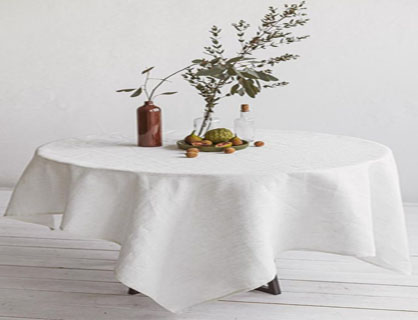
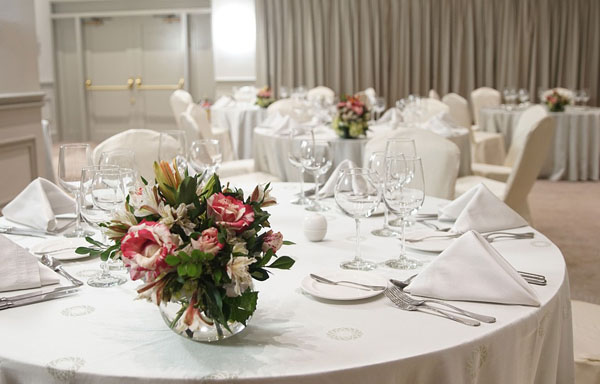
The tablecloth is a typical piece of cloth used to cover the dining table. Initially, the concept originated to prevent the table from scratches or any potential damage but later, it gained popularity as an ornamental piece. It is taken as an opportunity to add color and style to your table and outdoor living area.
When it comes to a tablecloth, a wide range of fabric options are available including cotton, linen, silk, organza, polyester, etc. However, the choice of the fabric depends upon your purpose of using it. Each material has its benefits and drawbacks in terms of style and functionality.
We have selected the 8 most popular fabrics for table linen.
1. Cotton

Cotton tablecloths are an excellent option for everyday use. If you have an eat-in kitchen or informal dining room, nothing can beat the comfort and beautiful appearance of cotton.
Cotton is readily available, easy to produce, and process, which makes the most options affordable.
Most cotton tablecloths are machine washable, though some may show color bleeding during or after the first washing. Also, these can be easily cleaned with a damp cloth or rug. The fabric is prone to wrinkle or may even wrinkle when dried.
Cotton fabrics are absorbent and soak up any kind of spill. It is one of the most durable fabrics known and only a few fabrics can compare to its long-lasting property. The availability of different colors and patterns add to the popularity of this fabric.
However, if you want to use the fabrics outdoor, you need to know that longer exposure to the sun; extreme weather and moisture can deteriorate its color shade and may cause molding.
2. Polyester
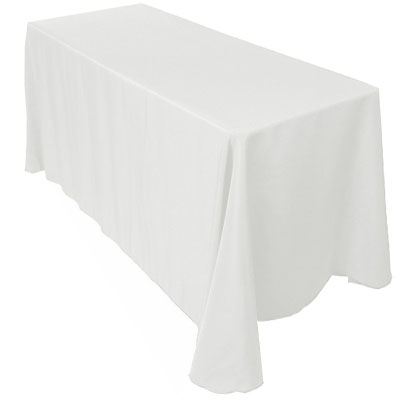
Polyester tablecloth covers a large portion of table linen catalogs. The synthetic fiber offers great durability and is resistant to stains and wrinkles. It is because of these properties that polyester is considered an excellent choice for table linens.
The fabric is extremely popular for places with high-volume such as banquets, wedding venues, or corporate events.
Polyester table cloths are the best bet for an outdoor sitting arrangement where chances of spilling and accidents are high.
Polyester is used to make not only standard tablecloth pieces but also for stretch and fitted pieces. Also, the fabric is used to make table linens that conform to the shape of the table.
A type of polyester is designed in such a way that it offers ‘cotton-feel’. It is as soft and durable as cotton. Just like cotton, the fabric is inexpensive, machine-washable, durable, and available in different colors and patterns.
The fabric is ideal for reuse.
3. Poly cotton fabric tablecloth
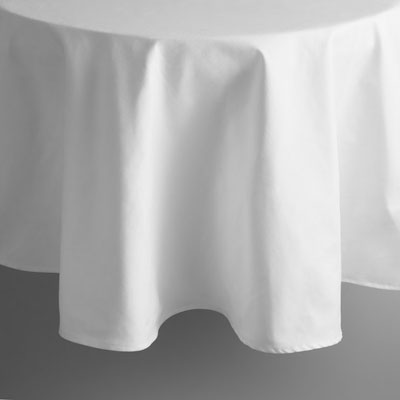
Poly cotton fabric is woven with 50% cotton and 50% polyester blend. It is safe and absorbent like cotton and offers durable, easy-care qualities of polyester. The heavy-weight tablecloth is available in different color shades, designs, and patterns.
This poly cotton fabric table cloth is one of the hottest selling products of Pushplinen.
What customers love most about it are its soil release fabric and color retention property. It will look new for years.
You can wash it in the machine and tumble dry it.
4. Vinyl
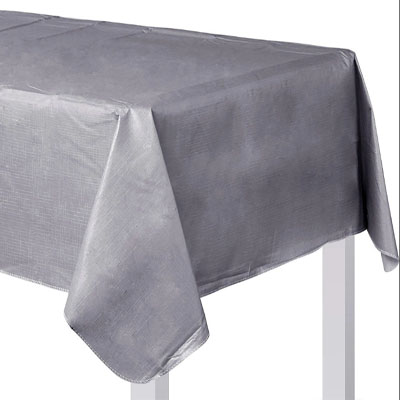
Vinyl tablecloths offer amazing weather resistance and easy cleanup that is why it is considered most suitable for outdoor setups and picnics. Whether it is stains, light, water, or heat, nothing can damage the fabric easily.
The particular type of fabric is associated with informal and outdoor dining, and that’s why it is not ideal for weddings or formal setups.
It is one of the cheapest fabrics available for a tablecloth. It is available in several colors and patterns to match the overall surroundings and theme.
5. Satin
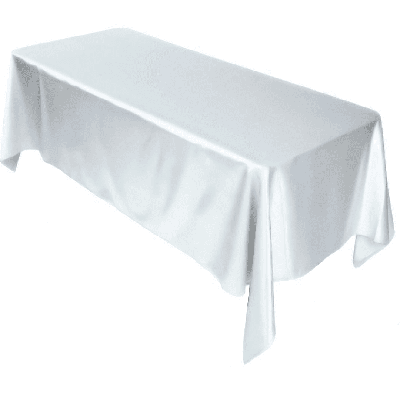
Satin is a high luster fabric that can be made either from silk or synthetic materials like polyester. The most widely available satin is made from polyester and is quite expensive.
Although satin is durable it is advised to wash it on a delicate cycle to maintain its look. The glossy fabric radiates and reflects the light beautifully, and creates a romantic, elegant vibe. That’s why the fabric is considered most suitable for weddings and events.
6. Damask
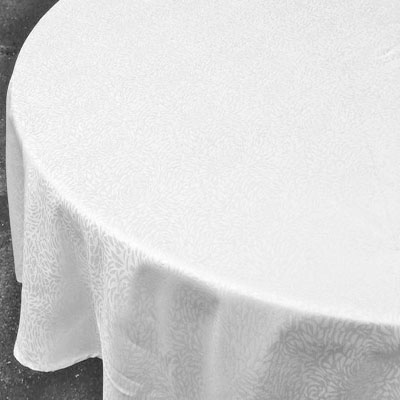
The traditional Damask table linen is made from 100% silk but these days, you may find damask tablecloth made from polyester fibers. You must have come across flocking damask lines at high-class, elegant events, but it is important to know that this is just a pattern that can be printed on any fabric.
True damask is made from the satin weave. The pattern is embossed and that’s why it is considered upscale linen. It is the sating weave that makes the fabric and not the embossed pattern. I hope the difference is clear!
The appearance of the fabric is quite similar to the glossy appearance of the satin because of the satin weave.
7. Organza
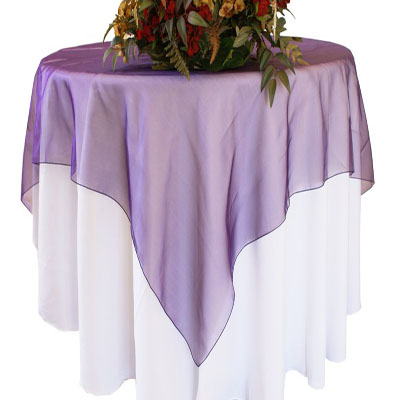
The semi-transparent organza is known for its beautiful appearance. It is most commonly used as runners and overlays because the linen underneath remains mostly visible. The elegant sheer lengths compliment most of the landscapes without overwhelming the design and color.
The plain weave fabric is made from polyester and can be washed in the machine in the delicate cycle. However, hand wash and drying in the air maintain the integrity and durability of the fabric.
Organza is not recommended for daily usage as it will ruin it, but for special occasions only. It should not be used for outdoor setup.
8. Burlap
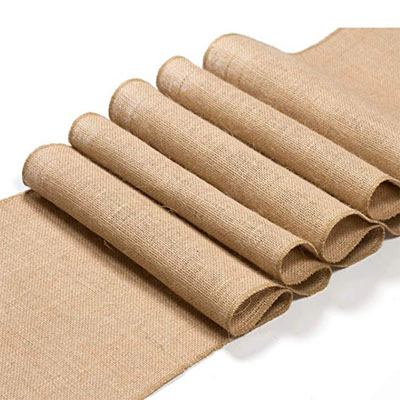
Just like cotton, Burlap is an eco-conscious natural material that is 100% biodegradable. Where the cotton fabric is made from cotton fibers, burlap is made from the skin of the jute plant.
Jute is a vegetable that is found in India and Bangladesh and is widely used in the manufacturing of consumer goods including twine, rope, and burlap sacks.
Earlier, the fabric was used to make uniforms of soldiers as the material is coarse and environmentally friendly.
These days, Burlap is popularly known as rustic chic and has emerged as a popular tablecloth trend across the wedding community. They are often dried in various colors so that the wedding planners can have plenty of color options while designing the rustic landscape.
Conclusion
The specialty fabrics like silk or organza that offer a more luxurious, stylish, and embroidered appearance are more expensive. They are often used for formal events like weddings and conferences.
As the name suggests, specialty fabrics require more delicate washing and care and are used on special occasions only.
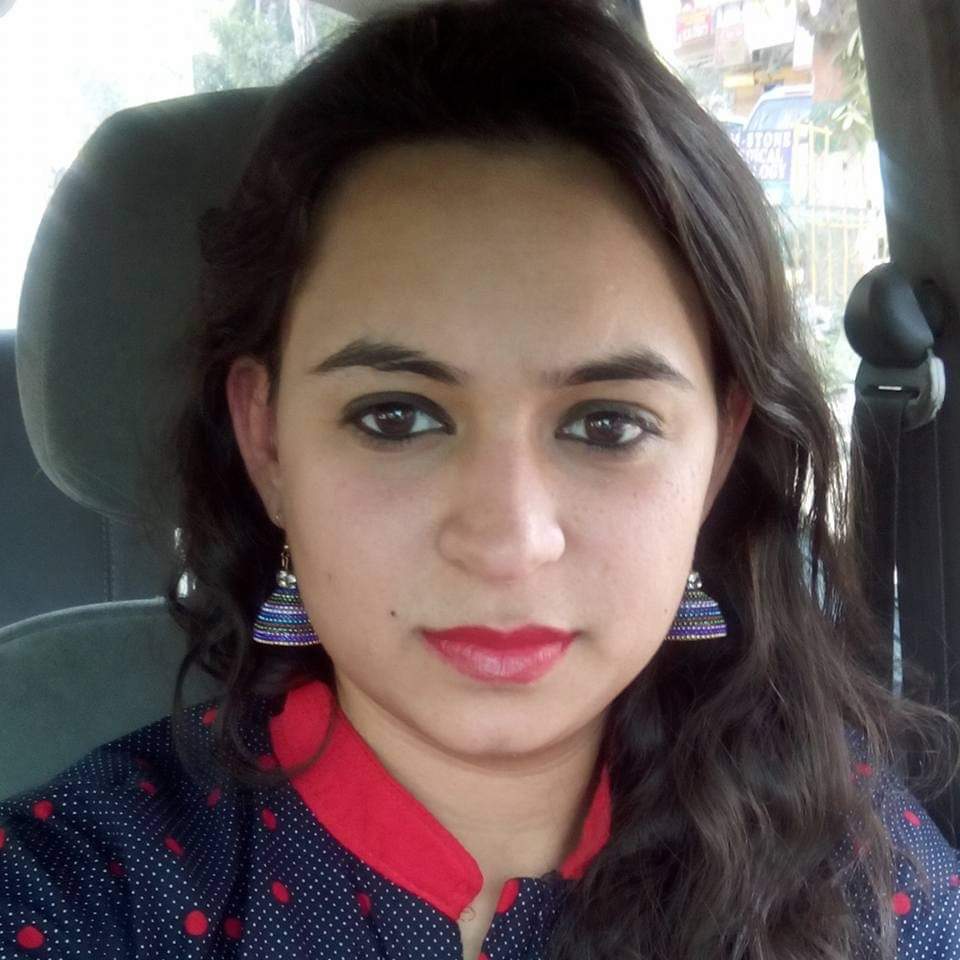
|
WRITTEN BY Sakshi
The blog enthusiast is a wife and a mother to a handsome boy. She’s been freelancing for many years and writes about creativity, decor, technology, eCommerce and literature.
Currently based in India, she works closely with B2C and B2B businesses to improve their search engine visibility and gain social media attention.
A writer by day and a reader by night; Sakshi possesses spot-on knowledge on a wide array of topics.
|






